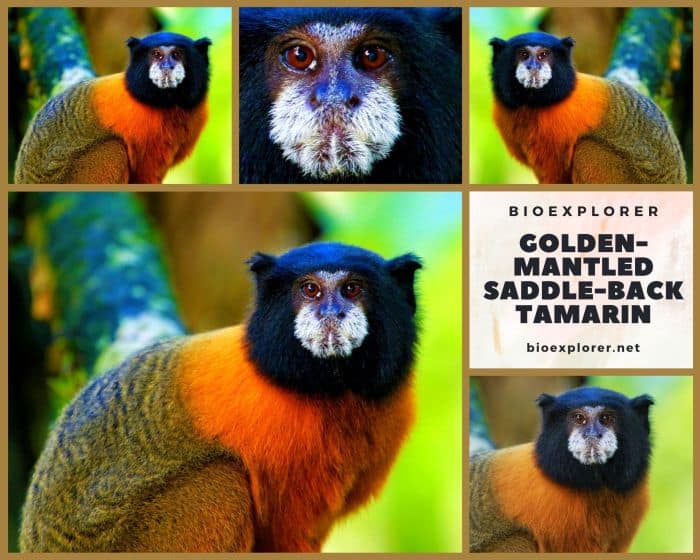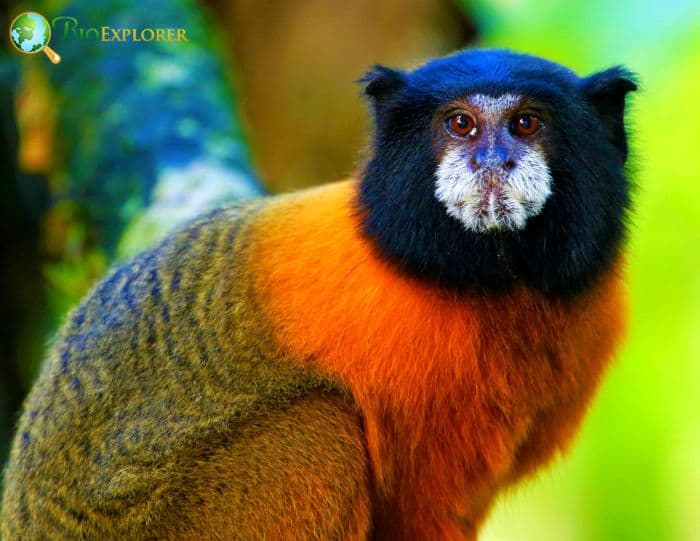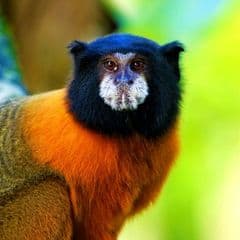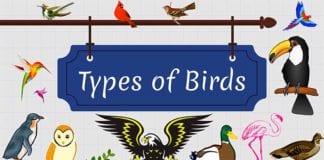
| Animalia | Primates | Callitrichidae | Leontocebus | Leontocebus tripartitus |
Golden-mantled Saddle-back Tamarin Distribution
Golden-mantled Tamarin Characteristics

The golden-mantled tamarin[1] (Leontocebus tripartius) is native to South America.
- It is found in Peru and Ecuador, especially in the upper Amazon (lowlands), east of the Andes in Ecuador, and northeastern Peru, between the Curaray River and the Napo River in Peru.
- This tamarin measures 218 to 240 mm from the tip of the nose to the beginning of the tail and has a tail length of 316 to 341 mm.
- The length of its ear is 31 to 32 mm. The head is black, with a continuous collar of black hairs below the throat.
- The muzzle and sometimes the face is pure white, and the neck has a light gold collar with cream fur on the back that contrasts sharply with the black crown.
- Its underside is orange. The long tail is non-prehensile, like all tamarins, and the large eyes are forward-facing.
Golden-mantled Tamarin Facts
- The golden-mantled tamarin is an arboreal, diurnal species that leaps and walks quadrupedally through the undergrowth.
- Due to their small size, limited intestinal volume, and rapid passage of food, these tamarins require a high-quality diet of nutrients and available energy.
- They are known to be less active and more social during the dry season due to scarce food sources.
- Like other callitrichids, Saguinus tripartus lives in groups where only the dominant females mate, usually with several males.
- The species can distinguish much information from odors, such as species, sex, social rank, and reproductive status.
Suggested Reading: Different Types of Monkeys with Pictures
Cite This Page
APA7MLA8Chicago
BioExplorer.net. (2025, April 14). Golden-mantled Tamarin. Bio Explorer. https://www.bioexplorer.net/animals/mammals/monkeys/golden-mantled-tamarin/.
BioExplorer.net. "Golden-mantled Tamarin" Bio Explorer, 14 April 2025, https://www.bioexplorer.net/animals/mammals/monkeys/golden-mantled-tamarin/.
BioExplorer.net. "Golden-mantled Tamarin" Bio Explorer, April 14 2025. https://www.bioexplorer.net/animals/mammals/monkeys/golden-mantled-tamarin/.












